One of the most asked questions I used to hear when I just started practising Yoga was “What is the Best time to do Sirsasana?” “Can we do Headstand in the evening?” And I was surprised to see my Yoga Guru (Teacher) answer that one could easily do Sirsasana (headstand) for half an hour by regular practice. Sounds quite impossible! Actually, it isn’t! Trust me. “There are people who are doing this Asana for two or three hours at one stretch. ” – Swami Sivananda .
Before we start discussing what time duration and when is the best time to do sirsasana (headstand) – first let us briefly understand the technique to do Sirsasana.
Headstand TECHNIQUE
Learning Headstand develops brainpower, a healthy heart and great confidence to name a few (See below for Benefits of Sirsasana). However, practise it either under the guidance of an expert or just study the information very carefully about the techniques and contraindications. Follow step-by-step guidelines – because you do not really need too much strength and flexibility to do so.
Spread a yoga mat and sit on both your knees. Lock your fingers by interweaving them. Place them on the ground up to the elbow. Next, bend forward on your knees and place the top of your head on the locked-fingers or between your two hands. Now, gradually raise both your legs till they come to a vertical position. Stay in this position for just 5 seconds if you are a beginner. In the end, slowly bring your legs down.
For STEP – BY – STEP instructions on HOW TO DO THE HEADSTAND? – Click here
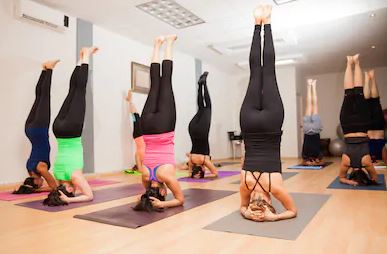
Click here to know What are the benefits of Headstand or Sirsasana?
What is the Best time to do Sirsasana? Can we do Sirsasana in the evening?
Yes, you can do the headstand (Sirsasana) both morning and evening on the same day. However, the Best time to do Sirsasana is to start the practice in the morning facing east. In case, you do it in the evening do it facing the west.
Some of you asked if you can do Headstand in the afternoon.
The answer is, Yes! As long as your stomach is empty and you haven’t eaten anything for 3 hours before you do a headstand.
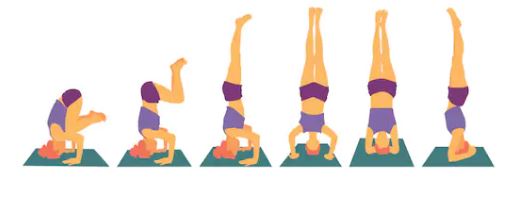
1. Can you do headstand after eating?
Always remember to do the Yoga Pose Sirsasana when your stomach is empty. Do headstand as long as you have not eaten anything at least 3 hours before you practice the Yoga pose.
2. How long can you stay in a Headstand Position?
If you are a beginner you can stand in this position for 5 seconds. Then, every week you can slowly and gradually increase by 5 more seconds. By the third week by regular practice, you could do it to 15 seconds.
By regular practice, you will start feeling very comfortable in the headstand position. As you progress, you can increase the duration of Sirsasna (headstand) from 20 to 30 minutes.
If you are strong, you can remain in Headstand position for half an hour by practising the asana (pose) for 2-3 months.
3. Does Headstand regrow hair?
Headstand or Sirsasana has numerous health benefits. While you stand on your head – the enriched blood flows to your head as well as your scalp. Thus, your grey hair turns into their original colour. You will experience good hair growth through a regular practice of this Yoga Pose.
In relation to the above question – some people also asked:
Does Sirsasana (Headstand) help in beard growth?
Hair loss often happens due to less amount of blood circulation in a particular area of the head or face.
When you do Headstand (Sirsasana) it directs oxygen-rich blood to your face, skull and scalp. It prevents hair fall, baldness and greying of hair. Thus, if you have lost hair in the beard area – it will help in regrowing the hair.
Things to remember while doing Headstand:
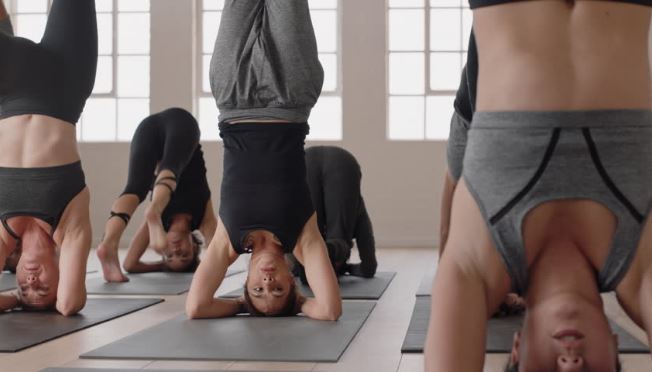
You can opt to place your hands on each side of your head while practising sirsasana. It is easier for you to balance your body in case you have a heavy body. Once you have learnt to balance you can take to the proper method of finger-locking.
If you have been practising balancing on the parallel bars or on the ground – doing the sirsasana or headstand will be a cakewalk for you. Always feel free to ask your Yoga instructor or friend to help you keep the legs steady while you are practising headstand. In the beginning, you could also take the help of a wall to learn to stand on the head.
What to do immediately after you come out of the Headstand or Sirsasana position?
Always remember to get up very slowly after you complete the headstand (sirsasana). Your blood circulation changes – therefore any jerks should be avoided as you get up. In case you feel dizzy – lie down in Corpse Pose (Shavasana) to ease your blood circulation.
Click here to follow the steps of Corpse Pose (Shavasana).

After the Yoga exercise – Headstand is over you ought to rest for 5 minutes and preferably drink a cup of milk. If you do the sirsasana for 20 or 30 minutes you could take some light refreshment or milk after it is over. Remember, this is very important.
Tips on Duration and Techniques of Sirsasana (Headstand):
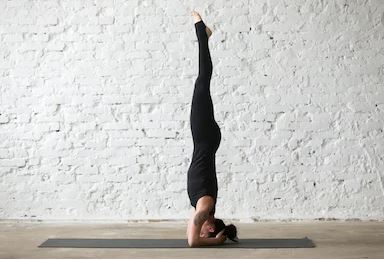
- Do not practise Sirsasana or headstand for a long time during summers. However, in winters you can practise it as long as you want.
- If you are a beginner – always have someone to support your pose, in the beginning, to avoid any strain on the neck or back muscles. Also, make sure you practise on a soft spot or a soft yoga mat to cushion any fall.
- Make sure you do the Sirsasana slowly. Never jerk your body up to come in the position or come out of the position.
- Maintain calm and cool. Do not feel anxious if you take a longer time to come in the position than you expected – do not feel anxious. Each body and mind has a different strength and pace.
- Avoid any kind of jerks when you perform the Headstand (shirshasana). Remember, to do the asana very very slowly.
- Never breathe through your mouth while you are standing on the head during headstand. Always breathe slowly through the nose.
- Some beginners may feel some sensation while practising headstand, however, it will soon vanish. Actually, it will bring joy and glee to the Yogis.
- When you come out of the position – always come down one leg at a time and towards your front side of the body to ease out of the position.
COMMON MISTAKES:
Even if you know what is the right time to do a headstand (Sirsasana); many of you might find it difficult to perform the asana (pose) in the beginning. You are bound to make a few common mistakes and you might injure yourself as well. But if you can be aware of these common mistakes you can avoid unnecessary strain and pain.
However, do not give up on yourself and try to avoid these mistakes mentioned below.
- Too much weight on your head may cause your head to pain. The weight of your body should not be only on your head or neck. Moreover, try making a triangle of your hands and head when you are in the position – makes you balance better.
- Avoid your back being arched with your legs dropping backwards. Work on your arms and abdomen strength before you start headstand for a better support system.
- Hands and elbows are too wide in distance. Try to avoid this as it may affect your balance.
- Lastly, collapsed and hunched shoulders are a big no-no.
- Do not stand up too quickly after the headstand is over – it could make you feel dizzy or you could even faint.
WHO SHOULD AVOID DOING HEADSTAND OR SIRSASANA?
If you happen to see any of the symptoms below before you start practising Sirsasana – as per Yoga Guru Denzil Oconnell, you should avoid doing the Headstand.
- Headstand is not suitable for people who suffer from neck ailments or scoliosis.
- People with heart conditions, vertigo, high blood pressure should be extremely cautious and avoid this pose.
Children under the age of seven years should refrain from practising headstand. The reason being that their skull is freshly fused and can be still soft and prone to injury. - If you suffer from a back injury or headaches, you should avoid performing this pose.
- Women when menstruating, should avoid this headstand as well.
- Pregnant women should not practice this pose or asana if they have never tried it before. If you are an expert and have been practising for a while then, you can continue practising this pose through your pregnancy.
- People with low blood pressure should not begin the pose until their blood pressure is normalized.
- If you suffer from glaucoma, then you should avoid the headstand as it can increase the pressure in the eyes.
THE BENEFITS OF SIRSASANA
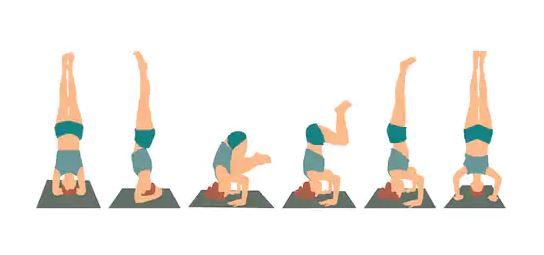
The idea of going upside down on your head may not be appealing to most people. In fact, this inversion can really be scary for certain individuals, like you and me. However, the “upside” of falling into a headstand( upside-down position) actually helps to boost your morale and render a new perception in your life.
Esteemed yoga teacher, B.K.S Iyengar, calls Sirsasana the ‘King of yoga postures’ because of its magical and wonderful effects that it has on your mind, body, and spirit.
Physical Benefits:
- If you do Sirsasana Or Headstand regularly you experience slow heartbeat and slow rates of respiration – an indicator of a flexible and stronger circulatory system.
- Richer and better blood flows into the spinal cord, brain and sympathetic nervous system. Therefore all body functions are enhanced. Disorders of the eyes, ears, nose and throat improve.
- If you have varicose veins you will find relief after practising Headstand as the stagnant blood tends to drain from the lower part of the body.
- Headstand also relieves you from renal colic and stubborn constipation.
The pressure on the lower back is released. This is so because during the headstand the lower back is released off the pressure. - The Sirsasana also combats Asthma and dropped stomach.
- It helps warm up the extreme tips of your toes.
Mental Benefits:
- Headstand helps boost memory and intellectual capacity.
- Improves concentration.
- Benefits eyesight and hearing.
Spiritual Benefits:
It helps in keeping up brahmacharya*. The seminal energy is transferred into the Ojas Shakti ( the spiritual force developed through the creative power of celibacy and yoga practice (Sadhana). In other words, it is called sex sublimation.
The seminal energy flows into the Ojas shakti and flows towards the brain for being stored up as a spiritual force which can be further used for contemplative purposes – Dhyana (Meditation).
Here is a Step by Step Video on How to do the Headstand (Shirsasana):
Examples by Swami Sivananda:
“Pandit Raghunath Sastri of Badrinarayan was very fond of this Asana and used to practise it for 2 or 3 hours. There was a Yogi at Varanasi who entered into Samadhi in this Asana. Sri Jaspat Rai, P.V. Acharyaji Maharaj, and others were doing this Asana regularly for more than one hour daily at one stretch.”
Read More:
I Cannot Sleep – Insomnia Causes and Cures
Meaning of Namaste – Definition and its Roots
10 Best Anxiety Management Techniques
What Yoga Poses are good for Knee Pain
How to do the Headstand? What are the benefits of Sirsasana?
Yoga and Diabetes – Poses to Cure and Prevent Type 1 and 2 Diabetes




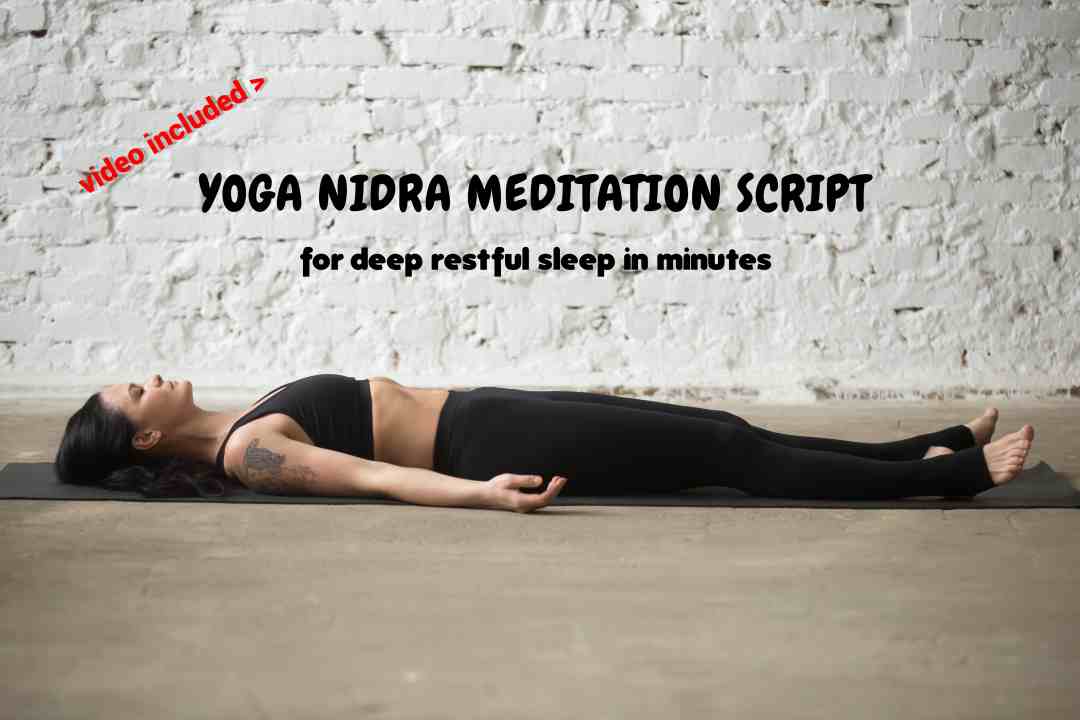



One Response
Hi
Do you mean when in the headstand face a particular direction or the direction we face before when on our knees? ? Thanks